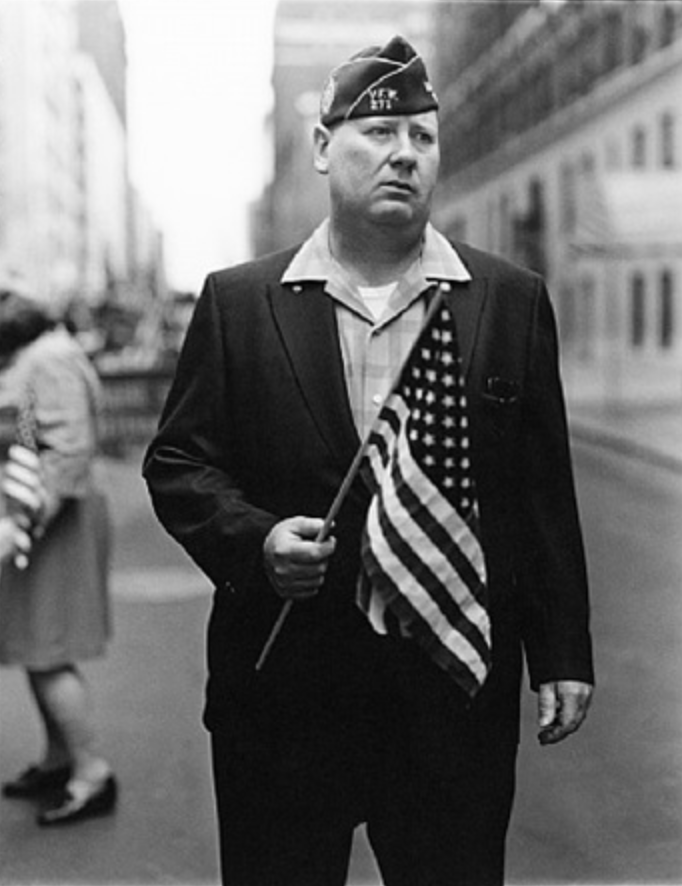This photo of a drive-in movie by Robert Frank employs an effective use of long depth of field composition. In the image, we see a classic drive-in movie in its golden years with many beautiful classic cars lined up. The choice of depth of field is effective in this use because it neither highlights the classic cars, nor the movie, but everything is in focus to highlight the entire experience unbroken. The only critique I have for this photo is that I wish the screen was centered between the cars, but perhaps this is the view from the driver’s side of a convertible.
https://www.lensculture.com/articles/robert-frank-the-americans#slideshow
In this photo by Diane Arbus, we see a veteran in N.Y.C., presumably in the veterans’ day parade. While veterans’ day is a glorious day to commemorate the veterans that fought and are still with us as well as those who have sacrificed their lives, this photo shows the tragedy and sadness that some of our veterans still endure. We see this veteran’s traumatized expression as he perhaps recollects on the events during the years he served. The photo does justice to his expression because he is the only figure seen clearly. The image isn’t focusing on the event itself, but rather the individuality of the veteran’s emotions.
http://www.artnet.com/artists/diane-arbus/veteran-with-a-flag-nyc-1971-a-CiRO0lTnXlgZmJGdtrhOww2




You have selected good examples of long and short depth of field. I particularly like the way you have related the expression to the technique in the short depth of field.